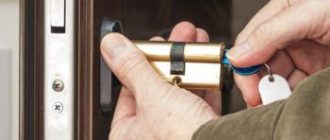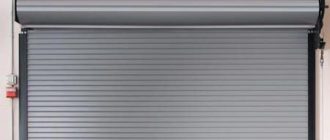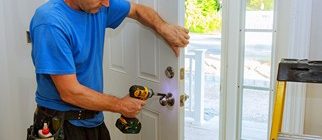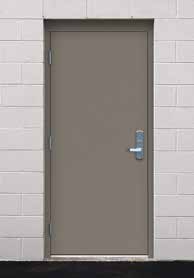
What is a hollow metal door
When it comes to selecting the right door for your commercial or industrial space, there are many options to consider. One popular choice is a hollow metal door. But what exactly is a hollow metal door and why should you choose it over other door types?
Hollow metal doors are made from a combination of metal sheets that are formed into a hollow shape. They are typically filled with insulating materials to provide added strength and durability. These doors are known for their sturdiness and resistance to extreme weather conditions, making them an ideal choice for heavy-duty applications.
One of the main advantages of hollow metal doors is their versatility. They can be used in a wide range of settings, including offices, schools, hospitals, and warehouses. Their strength and durability also make them an excellent option for areas that require extra security, such as prisons or government buildings.
Overall, understanding the basics of hollow metal doors is crucial in order to make an informed decision when selecting the right door for your space. Their durability, versatility, and security features make them a popular choice in a variety of industries. Whether you need a door for a commercial establishment or an industrial facility, a hollow metal door could be the perfect solution.
Importance of Hollow Metal Doors in Modern Architecture
Doors are an essential component of any building, serving as both an entry and exit point as well as a means of security and protection. When it comes to choosing a door for a commercial or industrial space, hollow metal doors are a popular option due to their numerous advantages.
So, what exactly is a hollow metal door? As the name suggests, it is a door that is made of metal and has a hollow core. This construction allows for enhanced durability and strength while still being lightweight. The hollow core also provides a layer of insulation, making these doors energy-efficient.
In modern architecture, hollow metal doors have become increasingly popular due to their versatility and adaptability. They can be customized to suit any design aesthetic, making them suitable for a wide range of architectural styles. Whether it’s a sleek and minimalist office space or a rustic industrial warehouse, hollow metal doors can seamlessly blend in with the overall design.
Furthermore, these doors offer enhanced security features, making them an ideal choice for commercial and industrial buildings. The metal construction provides exceptional strength and resistance against forced entry, ensuring the safety and protection of the occupants and valuables inside.
In addition to their strength and security benefits, hollow metal doors are also highly durable and low maintenance. They are resistant to dents, scratches, and cracks, making them a long-lasting investment. Unlike wooden doors that require regular repainting or refinishing, hollow metal doors only require minimal upkeep, saving time and money in the long run.
| 1. Enhanced durability and strength |
| 2. Lightweight and energy-efficient |
| 3. Versatile and customizable |
| 4. Increased security and protection |
| 5. Low maintenance and long-lasting |
In summary, hollow metal doors play a vital role in modern architecture by providing a durable, versatile, and secure solution for commercial and industrial spaces. Their ability to blend in with various design aesthetics makes them a popular choice among architects and designers. With their many advantages, it’s no wonder why hollow metal doors have become a staple in today’s architectural landscape.
The Structural Design and Components of Hollow Metal Doors
A hollow metal door is a type of door that is constructed using a metal frame with panels made of thin metal sheets. This design gives the door its strength and durability, making it suitable for various applications.
One of the key components of a hollow metal door is the metal frame. This frame is made from heavy-duty steel and is designed to provide structural support to the door. It is usually welded or bolted together to create a rigid structure that can withstand heavy use and abuse.
Another important component of a hollow metal door is the door panel. This is the part of the door that is visible and can be made from different types of metal sheets. The choice of material for the panel depends on factors such as the desired level of security, aesthetics, and specific application requirements.
In addition to the metal frame and panel, there are several other components that make up a hollow metal door. These include the door hinges, which allow the door to swing open and closed, and the door closer, which controls the speed and force at which the door closes.
Other components of a hollow metal door include the door lockset, which provides security by allowing the door to be locked, and the door handle, which is used to open and close the door. These components are usually made from metal to ensure durability and strength.
In conclusion, a hollow metal door is a type of door that is constructed using a metal frame and panels made of thin metal sheets. Its structural design and components, such as the metal frame, door panel, hinges, door closer, lockset, and handle, contribute to its strength, durability, and functionality.
Advantages of Choosing Hollow Metal Doors for Security
Hollow metal doors offer several advantages when it comes to enhancing security in your building. Here are a few reasons why you should consider choosing hollow metal doors for increased security:
Durability: Hollow metal doors are made from strong and durable materials such as steel, which makes them resistant to forced entry and tampering. These doors can withstand heavy impact and provide an extra layer of protection against intruders.
Fire resistance: Hollow metal doors are often fire-rated, meaning they can withstand high temperatures and prevent the spread of fire. This can be crucial in emergencies and can help save lives and minimize property damage.
Customizability: Hollow metal doors can be customized to meet specific security requirements. You can choose from a variety of locks, hardware, and access control systems to enhance the security level of your building. Additionally, these doors can be painted or coated to match your building’s aesthetics.
Sound insulation: Hollow metal doors offer better sound insulation compared to other door materials. This can be beneficial in reducing noise pollution and creating a quieter and more peaceful environment, especially in areas where privacy and concentration are important.
Economical: Hollow metal doors are cost-effective and offer long-term value. Due to their durability and resistance to wear and tear, these doors require minimal maintenance and have a longer lifespan compared to other door types. This can save you money in the long run.
Overall, choosing hollow metal doors for security purposes can provide you with peace of mind and ensure the safety of your premises. Their strength, fire resistance, customizability, sound insulation, and cost-effectiveness make them an excellent choice for any building that prioritizes security.
Different Types of Hollow Metal Doors for Various Applications
Hollow metal doors are a popular choice for many applications due to their durability, strength, and versatility. They are made from a combination of hollow steel frames and stiffeners, making them sturdy and long-lasting. These doors can be used in a variety of settings, including commercial buildings, industrial facilities, and even residential properties.
One of the most common types of hollow metal doors is the hollow metal fire door. These doors are specially designed to withstand high temperatures and prevent the spread of fire. They are often used in buildings where fire safety is a concern, such as hospitals, schools, and office complexes. The hollow metal construction of these doors helps to contain the heat and flames, providing a barrier between different sections of a building.
Another type of hollow metal door is the hollow metal security door. These doors are designed to provide enhanced security and are often used in banks, government buildings, and other high-security areas. They are usually equipped with strong locks and heavy-duty hinges to prevent unauthorized access. The robust construction of these doors makes them highly resistant to impact and tampering.
In addition to fire and security doors, there are also hollow metal doors specifically designed for soundproofing. These doors are commonly used in music studios, theaters, and other spaces where noise control is essential. The hollow metal construction, combined with sound-absorbing materials, helps to block out unwanted noise and create a quieter environment.
Overall, the different types of hollow metal doors offer a range of benefits and can be used in various applications. Depending on the specific needs of a project, different types of door styles and sizes are available. Whether it’s a fire door, security door, or soundproof door, hollow metal doors provide excellent performance and reliability.
Understanding Fire Ratings and Hollow Metal Doors
Hollow metal doors are an essential component of fire safety systems in buildings. They are specifically designed to withstand the intense heat and flames of a fire, providing a barrier to prevent the spread of smoke and flames. Understanding fire ratings and their importance is crucial when selecting the right door for your building.
Fire ratings determine the length of time that a door can withstand exposure to fire without compromising its integrity. The rating is indicated in minutes, such as 30 minutes, 45 minutes, 60 minutes, and so on. A higher fire rating means that the door can withstand fire for a longer period of time.
Fire-rated doors are made of metal, usually steel, which has excellent fire-resistance properties. Steel is a non-combustible material that can withstand high temperatures without warping or melting. This makes hollow metal doors a reliable choice for fire protection in commercial and industrial buildings.
Fire-rated hollow metal doors are equipped with additional features to enhance their fire-resistance capabilities. These features include intumescent strips or seals, which expand when exposed to heat, creating a tight seal to prevent the spread of flames and smoke. They may also have fire-rated glazing, which is specially treated glass that can withstand the intense heat of a fire.
When selecting a fire-rated hollow metal door, it is important to consider the fire rating requirements of your building. This depends on factors such as the size of the building, occupancy type, and applicable building codes. Consulting with a fire safety professional or engineer can help ensure that you select the right door for your specific needs.
In summary, fire-rated hollow metal doors are crucial for fire safety in buildings. Their ability to withstand fire and prevent the spread of smoke and flames is essential for protecting lives and property. Understanding fire ratings and selecting the appropriate door for your building is key in maintaining a safe and secure environment.
How to Properly Install Hollow Metal Doors
Installing a hollow metal door is a straightforward process that can be completed with a few basic tools and some knowledge of the materials involved.
Before beginning the installation, it is important to understand what a hollow metal door is. Hollow metal doors are made from steel sheets that are formed together, creating a hollow core. This construction gives the door strength and durability while also making it lightweight.
To install a hollow metal door, start by measuring the doorway and ensuring that it is the correct size for the door. Check that the opening is plumb, level, and square.
Next, gather the necessary tools, including a drill, screws, a screwdriver, a level, and a tape measure. Begin by installing the door frame, ensuring that it is level and square. Secure the frame to the wall using screws.
After the frame is secure, position the hollow metal door into the frame. Use shims to ensure that the door is plumb and level. Check the gap between the door and the frame to ensure that it is even all the way around.
Once the door is correctly positioned, secure it to the frame using screws. Be sure to drive the screws into the pre-drilled holes in the door and frame, being careful not to over-tighten them. This will ensure that the door is securely attached.
Finally, check the operation of the door by opening and closing it. Make any necessary adjustments to ensure that it operates smoothly.
In conclusion, installing a hollow metal door requires measuring the doorway, installing the frame, positioning the door, and securing it using screws. By following these steps, you can properly install a hollow metal door and ensure its functionality.
Maintaining and Cleaning Hollow Metal Doors
When it comes to preserving the longevity and appearance of your hollow metal doors, regular maintenance and cleaning are essential. By following these simple steps, you can keep your doors in top condition for years to come.
1. Inspect regularly: Regularly inspect your hollow metal doors for any signs of damage or wear. Look out for dents, scratches, rust, or misaligned parts. Addressing these issues promptly can prevent further damage.
2. Clean with care: To remove dirt, dust, and grime, use a soft cloth or sponge dampened with mild soap and water. Avoid using harsh chemicals or abrasive cleaners that can damage the metal surface. Gently wipe down the door, focusing on hard-to-reach areas like the edges and crevices.
Pro tip: For stubborn stains or marks, you can use a non-abrasive cleaner specifically designed for metal surfaces. Follow the manufacturer’s instructions carefully.
3. Pay attention to hinges and locks: Hinges and locks are critical components of a hollow metal door. Regularly inspect and lubricate them to ensure smooth operation. Remove any debris or buildup that could hinder their movement and functionality.
4. Protect from moisture: Moisture can cause corrosion on metal surfaces, leading to rust and deterioration. To protect your hollow metal doors, make sure they are properly sealed and maintained. Consider adding weatherstripping or a door sweep to prevent moisture from seeping through the gaps.
5. Prevent damage: Minimize the risk of damage to your hollow metal doors by avoiding excessive force when opening or closing them. Teach your staff or family members proper door handling techniques to prevent accidents and prolong the lifespan of the doors.
By incorporating these maintenance and cleaning practices into your routine, you can ensure that your hollow metal doors remain in optimal condition and continue to serve their purpose effectively.
Common Problems and Troubleshooting Hollow Metal Doors
Hollow metal doors are a popular choice for many commercial and industrial applications due to their durability and strength. However, like any other building material, they can experience common problems that may require some troubleshooting.
One common problem with hollow metal doors is warping. This can occur due to temperature changes or moisture exposure. When a hollow metal door warps, it may not fit properly in its frame, causing difficulties with opening and closing. To troubleshoot this issue, you can try adjusting the hinges or using a heat gun to carefully reshape the door back into place.
Another common problem is corrosion. Since hollow metal doors are typically made of steel, they are susceptible to rust and corrosion, especially in high humidity or coastal environments. To troubleshoot this issue, you can use a wire brush to remove any visible corrosion and then apply a primer and paint to prevent further damage.
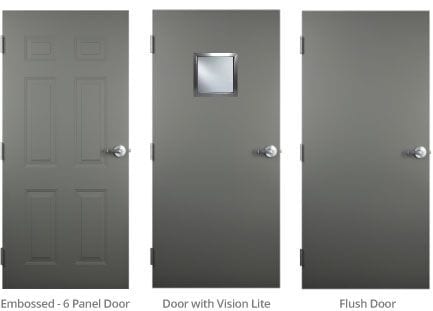
One more common problem with hollow metal doors is hardware malfunction. The door may have difficulty latching or the hinges may become loose over time. To troubleshoot this issue, you can tighten the screws on the hinges or replace any worn-out hardware.
Lastly, hollow metal doors can also experience issues with insulation. If the door is not properly insulated, it can lead to temperature transfer, drafts, and energy loss. To troubleshoot this issue, you can use weatherstripping or insulation inserts to seal any gaps and provide better insulation.
In summary, hollow metal doors can encounter common problems such as warping, corrosion, hardware malfunction, and insulation issues. By understanding what these problems are and some basic troubleshooting techniques, you can maintain the functionality and longevity of your hollow metal doors.
The Cost Considerations of Hollow Metal Doors
When considering the cost of a hollow metal door, there are several factors to take into account. Firstly, the type of metal used in the construction of the door will play a significant role in the overall cost. Doors made from higher quality metals, such as stainless steel, will tend to be more expensive than those made from lower grade metals.
Another factor to consider is the size and design of the door. Larger, more intricate doors will require more materials and labor to produce, resulting in a higher cost. Additionally, any additional features or customization, such as windows, hardware, or special finishes, will also add to the overall cost.
Installation costs should also be taken into consideration. Hollow metal doors require specific expertise and tools to be properly installed, so it’s important to budget for professional installation services. These costs will vary depending on the complexity of the installation and the location of the project.
It’s worth noting that while hollow metal doors may have a higher upfront cost compared to other door materials, they offer long-term durability and security, making them a cost-effective investment in the long run. They are highly resistant to damage and require minimal maintenance, reducing the need for costly repairs or replacements down the line.
Overall, the cost of a hollow metal door will depend on a variety of factors, including the type of metal, size and design, additional features, and installation services. It’s important to carefully consider these factors and budget accordingly when choosing a hollow metal door for your project.
The Role of Hollow Metal Doors in Energy Efficiency
Hollow metal doors play a crucial role in enhancing the energy efficiency of a building. These doors are constructed using a combination of metal materials, which provides excellent insulation properties. The hollow space within the door acts as a barrier against heat transfer, preventing the loss of heated or cooled air from the interior of the building.
One of the main reasons why hollow metal doors are considered energy-efficient is their ability to minimize air leakage. The tight seal created between the door and the frame prevents air infiltration, ensuring that the conditioned air remains inside the building. This reduces the workload on HVAC systems, leading to lower energy consumption and reduced utility bills.
Additionally, the use of metal materials in the construction of hollow metal doors enhances their durability and thermal performance. Metal has a high thermal conductivity, meaning it can quickly transfer heat. However, the hollow space within the door acts as a thermal barrier, limiting the transfer of heat from one side to another. This helps to maintain a consistent indoor temperature and reduce the load on heating and cooling systems.
| 1. Enhanced insulation properties |
| 2. Minimized air leakage |
| 3. Reduced energy consumption |
| 4. Lower utility bills |
| 5. Improved durability |
| 6. Consistent indoor temperature |
In conclusion, hollow metal doors are a valuable component in promoting energy efficiency in buildings. Their excellent insulation properties, ability to minimize air leakage, and thermal performance contribute to reducing energy consumption and creating a comfortable indoor environment. Incorporating hollow metal doors into building designs can result in cost savings and a greener, more sustainable future.
Enhancing Aesthetics with Hollow Metal Doors
When it comes to enhancing the aesthetics of a space, the choice of doors plays a crucial role. While there are various options available, hollow metal doors stand out for their unique combination of durability and style.
One of the key advantages of hollow metal doors is their sleek and modern appearance. The smooth, metallic finish adds a touch of sophistication to any environment, making them an ideal choice for contemporary designs. Additionally, the clean lines and minimalist look of these doors can help create a sense of openness and spaciousness.
Another way hollow metal doors can enhance aesthetics is through customization options. These doors can be easily painted or powder coated to match any color scheme, allowing for seamless integration with the overall design theme. Whether it’s a bold and vibrant hue or a subtle and understated shade, the versatility of hollow metal doors ensures they can adapt to any style.
In addition to color customization, hollow metal doors can also be customized with various hardware options. From decorative handles and hinges to unique locksets and pulls, the possibilities are endless. These small details can make a big difference in enhancing the overall aesthetic appeal.
Furthermore, hollow metal doors can be designed with various patterns and textures, adding a visual interest to the space. Whether it’s a simple horizontal pattern or an intricate geometric design, the texture on the surface of these doors can create a striking focal point. This can be particularly beneficial in spaces where the door is meant to draw attention or serve as a statement piece.
Overall, the metal construction, hollow core, and customizable nature of hollow metal doors make them an excellent choice for enhancing aesthetics. Whether it’s creating a sleek and modern look or adding unique finishes and patterns, these doors offer endless possibilities to transform the visual appeal of any space.
The Soundproofing Properties of Hollow Metal Doors
When it comes to soundproofing, hollow metal doors have several advantages over other types of doors. Their construction and design make them an effective barrier against noise, making them a popular choice for commercial and industrial applications.
One of the main factors that contribute to the soundproofing properties of a hollow metal door is its construction. These doors are made with a metal frame that surrounds a hollow core, which is then filled with insulation material. This construction helps to absorb and dampen sound waves, preventing them from passing through the door and into the adjoining spaces.
In addition to their construction, hollow metal doors also have a tight seal when closed, which helps to further block out noise. The metal frame of the door creates a solid barrier that minimizes the transfer of sound vibrations, ensuring that the noise outside the door stays outside and doesn’t disturb the peace and quiet inside.
Furthermore, hollow metal doors can also be enhanced with additional soundproofing features. Acoustic door sweeps, for example, can be added to the bottom of the door to create an airtight seal and further reduce noise transmission. Soundproofing gaskets and seals can also be installed around the door frame to provide additional soundproofing benefits.
Overall, the soundproofing properties of hollow metal doors make them an ideal choice for spaces that require privacy, such as offices, conference rooms, and recording studios. They effectively block out unwanted noise, creating a quieter and more comfortable environment for work or relaxation. Whether it’s blocking out the noise from a busy office or muffling the sounds of machinery in an industrial setting, a hollow metal door is a reliable and efficient solution.
Hollow Metal Doors and Accessibility Compliance
When it comes to accessibility compliance, hollow metal doors can offer many advantages. These doors are a popular choice in buildings that need to meet accessibility requirements, as they provide several key features that make them suitable for use by people with disabilities.
One of the main benefits of hollow metal doors is their durability. These doors are constructed using a sturdy steel frame, which makes them strong and long-lasting. This is important for accessibility compliance, as doors need to be able to withstand frequent use and potential abuse. Hollow metal doors are also resistant to damage from impacts, which further enhances their durability.
In addition to their durability, hollow metal doors also offer a high level of security. These doors are often equipped with heavy-duty locking mechanisms, ensuring that they can provide a strong barrier against unauthorized access. This is an important consideration in buildings that need to comply with accessibility requirements, as security is a key concern for people with disabilities.
Furthermore, hollow metal doors can be customized to meet specific accessibility needs. They can be fitted with a variety of hardware options, such as door closers, panic devices, and automatic operators. These features help to ensure that the doors are easy to operate for people with disabilities, allowing them to enter and exit the building safely and independently.
Overall, hollow metal doors are a practical choice for buildings that need to comply with accessibility requirements. Their durability, security, and customization options make them well-suited for providing safe and convenient access for people with disabilities.
| Durability |
| Security |
| Customization |
Q&A:
What are hollow metal doors made of?
Hollow metal doors are typically made of steel or a combination of steel and other materials.
How are hollow metal doors different from other types of doors?
Hollow metal doors are different from other types of doors because they are made of metal, which makes them stronger and more durable. They also have a hollow core, which makes them lighter and easier to install.
What are the advantages of using hollow metal doors?
There are several advantages of using hollow metal doors. They are fire-resistant, provide excellent security, and have a long lifespan. They are also highly durable and can withstand harsh weather conditions. Additionally, they are customizable and can be designed to fit any size or shape of the opening.
Are hollow metal doors energy-efficient?
Yes, hollow metal doors can be energy-efficient. They can be insulated with materials that help to reduce heat transfer, making them more energy-efficient and helping to lower energy costs.
How are hollow metal doors installed?
Hollow metal doors are typically installed using hinges or pivots. They are usually placed within a metal door frame, secured with screws or bolts, and adjusted for proper fit and alignment.

